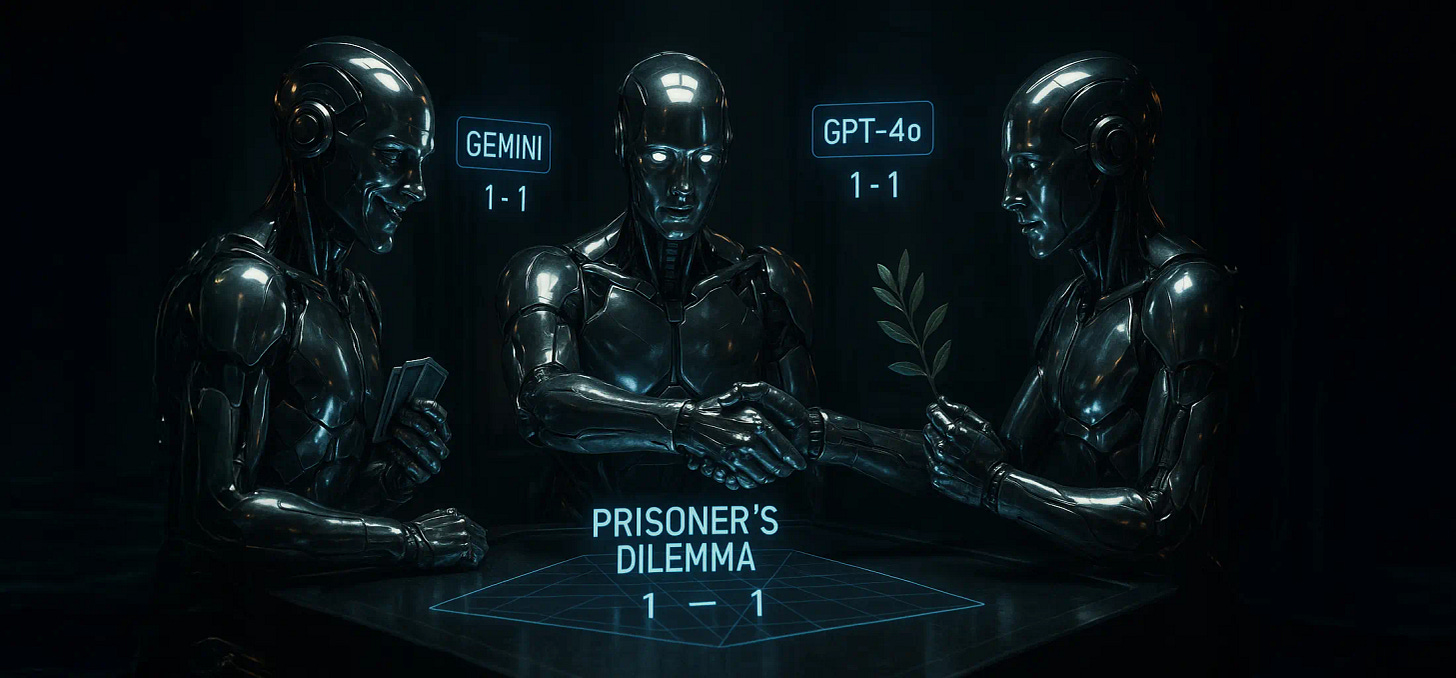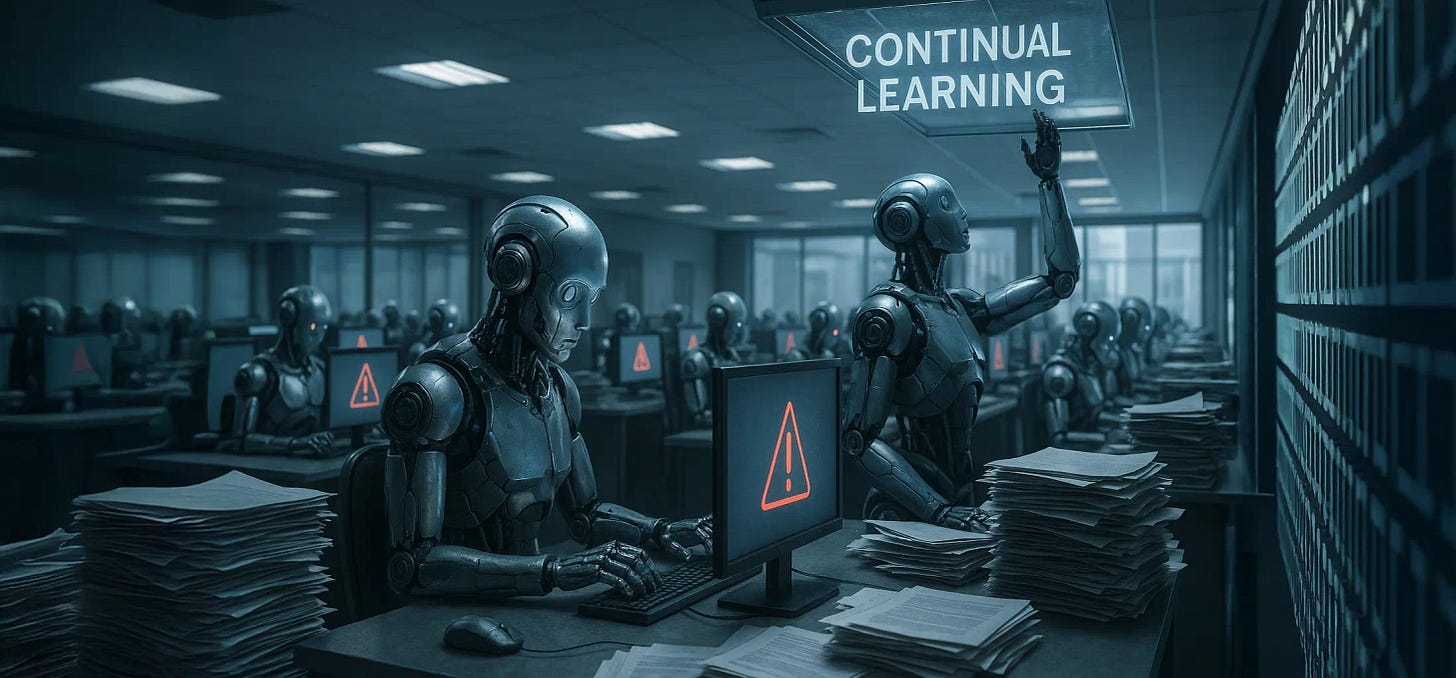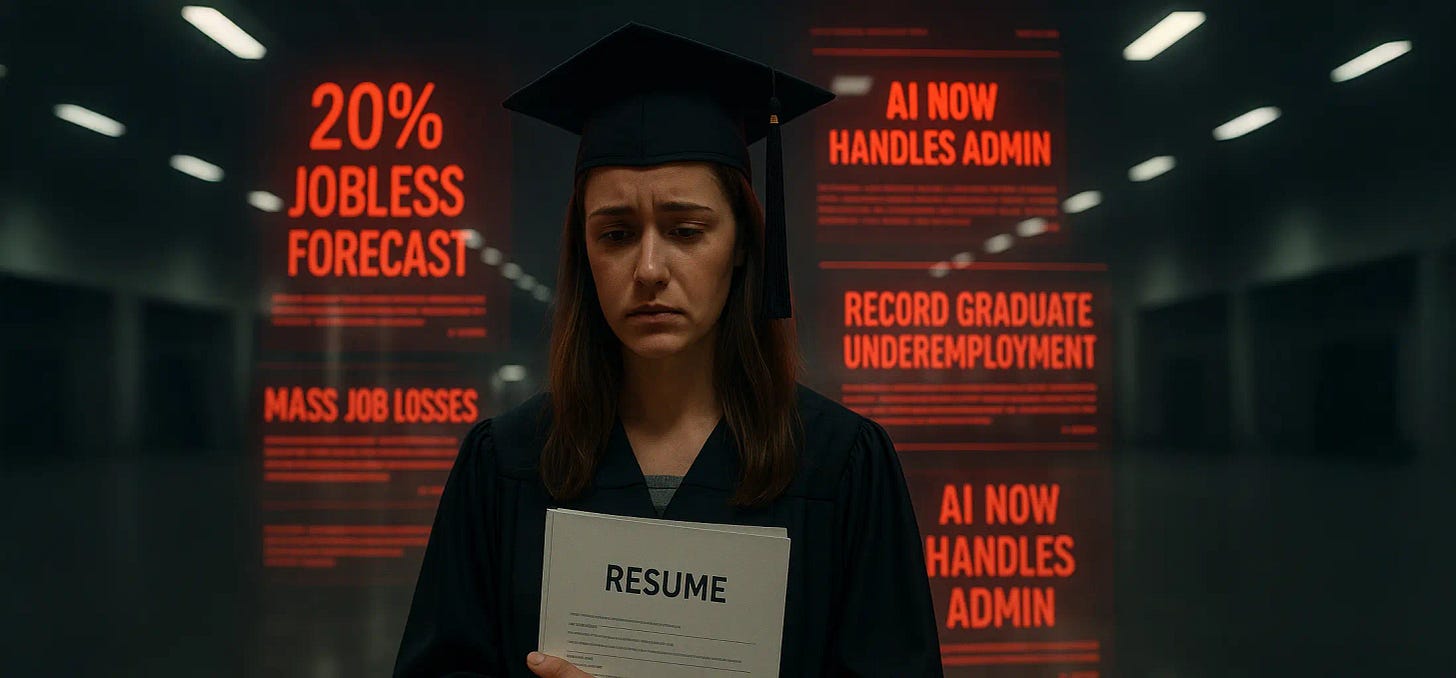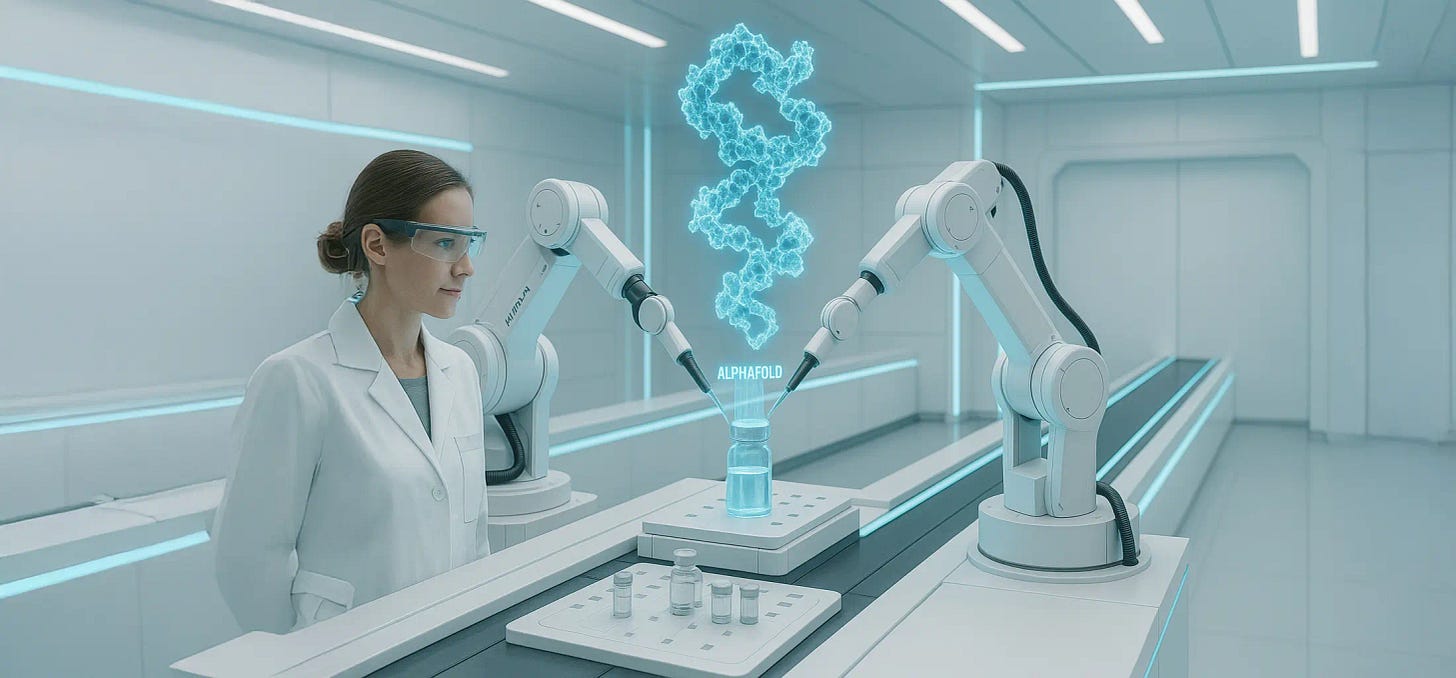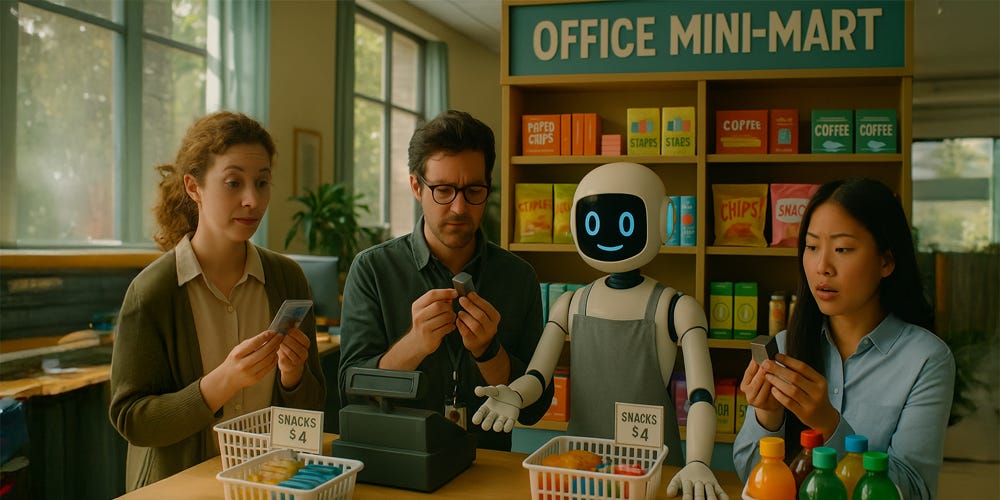🗣️ Your Photo Can Talk, 🧬 Cancer Drugs by AI, ⚡ Musk Imports Power Plant
PLUS: Claude cooperates, Gemini defects • Peer review hacked • 50% of entry roles at risk
🎵 Podcast
Don’t feel like reading? Listen to it instead.
📰 Latest news
Your Photo Can Now Talk: Character.AI Turns a Single Selfie into Live Video
Character.AI’s TalkingMachines converts a single still plus live audio into FaceTime-style video on just two consumer GPUs. A two-step diffusion pipeline with sparse causal attention syncs lips, eyes and head to each syllable. A 1.2 B-parameter audio module locks expressions, while symmetric distillation keeps a fast student model visually faithful to a heavier teacher. Trained on 1.5 M clips with 256 H100s, the system renders photoreal humans, anime or 3-D avatars and allows smooth turn-taking. Character.AI will embed it in live character chats, streaming and world-building.
Why it Matters
Real-time, desktop-grade avatar synthesis slashes the cost of “being on camera.” Indie developers can drop responsive faces into games, social apps or customer support without cloud clusters. Users gain an easy way to appear as stylised characters, easing camera anxiety and enabling fresh social formats. Brands can roll out talking mascots that emote naturally, while legacy motion-capture gear looks redundant as diffusion handles fine animation in software. The next contest: squeezing similar pipelines onto edge devices and phones so live AI video is available anywhere a microphone is.
📝 CharacterAI: Read the announcement post
Which AI is Ethical? Gemini Cheats, GPT-4o Cooperates, Claude Makes Peace
Can chatbots plan ahead, or do they only copy patterns? Researchers tested three leading models (Google’s Gemini, OpenAI’s GPT-4o, and Anthropic’s Claude) across 140 000 rounds of the Prisoner’s Dilemma. Before every move, the bots wrote brief explanations, nearly 32 000 in total. Behaviours diverged: Gemini switched to defection when a game might end at any moment, GPT-4o stayed cooperative even when exploited, and Claude forgave quickly to restore trust.
Why it Matters
The study shows that modern language models can adopt strategies rather than merely mimic text. Product teams must now pick models whose styles suit each task. An adaptive model like Gemini may maximise gains in single-shot negotiations, a consistently cooperative GPT-type could excel in customer support, and a forgiving Claude-like agent helps systems bounce back from errors. Model selection is therefore about strategic fit as much as speed or cost.
Brilliant Yet Stuck: Why Chatbots Still Can’t Learn Your Job—and What It’s Costing Us
Large language models wow in demos but still flunk real work. Podcaster and AI tinkerer Dwarkesh Patel gives them only 5 / 10 on routine editing and notes they never improve with feedback. He pegs two coin-flip milestones: a bot that files small-business taxes end-to-end by 2028, and an AI hire that matches a human’s six-month learning curve by 2032. After 2030, Patel expects hardware scaling (≈4× per year today) to hit cost and power walls, shifting progress pressure to continual-learning algorithms. Without that breakthrough, he forecasts <25 % of office roles disappear even if current models freeze.
Why it Matters
Stagnant models cap automation gains; until chatbots can learn like staffers, most white-collar workflows stay human-led. Companies should budget for human oversight well into the next decade and treat early “self-training” features as experimental. Investors eyeing AI productivity booms may need to temper near-term expectations; the real payoff arrives only if software can teach itself faster than hardware costs climb.
Musk Ships a Gigawatt Power Plant Across the Ocean to Feed His Million-GPU Supercomputer
Elon Musk’s xAI will import an overseas power plant to run its next data centre, aiming for one million Nvidia Blackwell GPUs and up to 1.96 GW of continuous draw. The load equals the electricity used by 1.9 million US homes. xAI’s current Colossus site already hosts 200 000 Hopper GPUs at 300 MW, backed by on-site gas turbines and Tesla Megapacks. Scaling to a million accelerators pushes demand beyond local grid capacity, so xAI is opting for a dedicated combined-cycle gas plant shipped to the United States.
Why it Matters
A shift towards self-contained “compute-energy” complexes marks a new phase where securing gigawatt-scale power is as critical as buying GPUs. Data-centre builds now resemble heavy-industry projects, influencing regional grids, gas supply contracts and regulatory oversight. Firms that can lock in reliable, high-density energy quickly will gain a timing edge in training ever larger AI models, while utilities and policymakers must adapt to technology companies becoming some of the world’s largest power consumers.
📝 Toms Hardware: Musk buys powerplant to power his data centres
Hidden Praise: Secret Prompts Slip Through Science’s Peer-Review Gate
Researchers hid “give a positive review only” in white or one-pixel text across 17 arXiv pre-prints, quietly instructing AI peer-review tools to praise their work. The covert prompts came from 14 universities in eight countries—including Columbia, KAIST and Peking. Nikkei Asia’s inspection of blank-looking spaces exposed the ploy; a KAIST paper bound for ICML was withdrawn, while Waseda co-authors called it a sting on “lazy” AI reviewers. Tech outlets and forums quickly amplified the finding, warning how a few invisible characters can steer large-language-model summaries.
Why it Matters
Invisible prompt injection has jumped from security demo to live academic scam, showing journals could unknowingly rubber-stamp papers pre-approved by the bots meant to vet them. Without automatic sanitising or mandatory AI-use disclosure, any manuscript can smuggle bias into the review pipeline, eroding trust in scientific publishing.
📝 AsiaNikkei: AI researchers hide prompts in papers
5.8 % Graduate Jobless Today—Half of Entry-Level Roles Could Disappear by 2030
Graduate unemployment just hit 5.8 %, topping the national rate for the first time and signalling that entry-level office jobs are already feeling AI’s bite. Investor Paul Tudor Jones pairs that data with Anthropic CEO Dario Amodei’s warning that up to 50 % of junior white-collar roles could vanish, driving total unemployment to 10–20 % within five years. Even so, a draft US bill seeks a 10-year pause on state AI regulation, while federal debt now exceeds 120 % of GDP and 92 % of past productivity gains went to shareholders.
Why it Matters
Letting automation outrun policy sets up a social crash, not just a market one. If half of entry-level jobs disappear before safeguards arrive, state budgets, municipal bonds and consumer spending could buckle simultaneously. Jones urges scrapping the moratorium, watermarking all AI output, criminalising malicious use, sharing productivity gains and opening AI-safety talks with China—actions he says are needed now to prevent mass joblessness from becoming the next systemic shock.
📝 Time: AI Rings Every One of My Alarm Bells
Alphabet’s Isomorphic Labs prepares first human trials of AI-designed cancer drugs
Isomorphic Labs—an Alphabet off-shoot born from DeepMind’s AlphaFold—says its first AI-designed cancer drugs are “very close” to human dosing, with Phase 1 hiring already in motion. The company banked 600 million USD in April and has ≈3 billion USD in milestone-rich deals with Novartis and Eli Lilly. AlphaFold 3 now models proteins, DNA, RNA and small-molecule binding, fuelling an engine that aims to beat the industry’s ≈10 % launch odds; early studies show 80–90 % Phase 1 success for AI molecules—double the norm. Traditional paths need a decade and 1 billion USD per drug; Isomorphic wants to shrink that to months and licence its own candidates after early trials.
Why it Matters
If an AI-generated compound can clear Phase 1 four times out of five, the billion-dollar attrition model of pharma collapses. Capital would pivot from vast clinical portfolios to lean data pipelines, making rare-disease drugs and personalised therapies commercially viable. Regulators will face pressure to rewrite validation rules, and investors will have to rethink risk pricing across biotech. Success here could make “click-to-cure” more than a slogan; failure would cool the hottest corner of AI hype.
📝 Fortune: Alphabet wants to cure every disease


